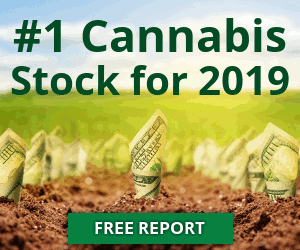Shares of KG Chemical Corporation (KRX:001390) last traded at 14750, representing a move of -0.34%, or -50 per share, on volume of 82,825 shares. After opening the trading day at 14750, shares of KG Chemical Corporation traded in a close range. KG Chemical Corporation currently has a total float of 12.10 million shares and on average sees 132,294 shares exchange hands each day. The stock now has a 52-week low of 14450 and high of 33200.
KOSPI: A Powerful Indicator Of The Asian Economy
South Korea has one of the most progressive, fast-paced economies in Asia. It is an influential global leader that helps drive growth in the Asian economy. Leading abilities of South Korean market help KG Chemical Corporation to attract more attention to its work. Without it, the region’s capacities are surely minimized.
One of the most important factors backing South Korea’s successful economy is the Korea Exchange (KRX), which boasts with over $1 trillion in total market capitalization. Despite being one of the youngest stock exchanges in Asia, it has already transformed the conduct of trade and commerce in South Korea. It brings foreign investors to KG Chemical Corporation and other companies.
Stock Market Division of the KRX
Under the Korea Stock Exchange and Futures Exchange Act, the KRX is divided into three: 1) the Stock Market Division; 2) the KOSDAQ Market Division; and 3) the Derivatives Market Division. All publicly traded companies are listed on the Stock Market Division of the KRX.
The Korea Composite Stock Price Index (KOSPI), which was first published in 1983, is one of the main real-time economy indicators in South Korea as it tracks the performances of all the companies listed on the Stock Market Division of the KRX. That being said, the KOSPI had to be divided into several sub-indices. These include the KOSPI 50, which monitors the 50 most active stocks on the Stock Market Division of the KRX; the KOSPI 100, which monitors the 100 most active stocks; and the KOSPI 200, which monitors the 200 most active stocks out of more than 700 stocks. A stock can be included in the KOSPI 50 and the KOSPI 100 only if it is included in the KOSPI 200. At the same time, a stock can only be included in the KOSPI 50 if it is included in the KOSPI 100. KG Chemical Corporation is inside the KOSPI trading operations.
The KOSPI tracks stocks on the Stock Market Division of the KRX based on market capitalization using the base value of 100. The base date is January 4, 1980. Similarly, the KOSPI 200, which represents roughly 70% of the total market valuation on the Stock Market Division of the KRX, monitors its components using the base value of 100. The base date is April 2007.
Historical Statistics
In January 1981, the KOSPI had reached its all-time low of 93.10 points. In May 2011, it had reached its all-time high of 2,228.98 points. On the other hand, in June 1998, the KOSPI 200 had reached its all-time low of 31.96 points; and in April 2007, it had reached its all-time high of 100 points.
When the Asian economy was recovering from the financial crisis that had started in Thailand, the KOSPI had recorded its largest one-day gain of 8.50% in June 1998. Meanwhile, after the 9/11 tragedy that had shaken the global economy, the KOSPI had recorded its largest one-day decline of 12.02% in September 2001.
By 2019, Asia is highly expected to account for 26% of the global financial wealth, demonstrating a 2% representation growth in just five years. The best way to bank on that fast-paced growth is to invest on stocks listed on the Stock Market Division of the KRX. Investors which work with KG Chemical Corporation hope to find the best quality there.
KG Chemical Corporation manufactures and supplies fertilizers, concrete compound ingredients, and agricultural products in South Korea and internationally. The company has market cap of $178.47 billion. The firm offers mineral and organic fertilizers; and eco-friendly substances for various soil types to farmers. It currently has negative earnings. It also provides chemical materials, including water reducing agents, preservatives, compounds, and dispersants, as well as naphthalene dispersants for use in pigment, rubber, and latex manufacturing industries.

Receive News & Ratings Via Email - Enter your email address below to receive a concise daily summary of the latest news and analysts' ratings with our FREE daily email newsletter.
